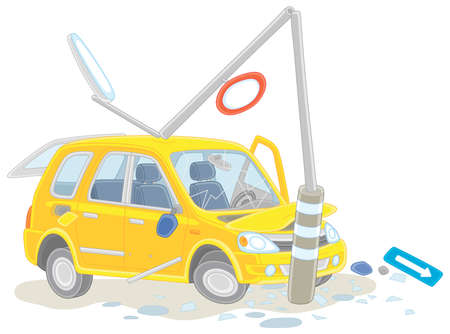1. Introduction to Classic Car Restoration
Restoring a classic car is more than just a mechanical project; its a labor of love that brings history back to life. Car enthusiasts take on this challenge for various reasons, from preserving automotive history to reliving personal memories associated with vintage vehicles.
The Appeal of Classic Car Restoration
What makes restoring a classic car so enticing? For many, its about the deep appreciation for beautiful craftsmanship, nostalgia, and the thrill of bringing an old vehicle back to its former glory. Some see it as an investment opportunity, as well-restored classic cars can gain considerable value over time.
Main Reasons Enthusiasts Restore Classic Cars
Car restoration is a passion-driven hobby, but enthusiasts have different motivations for taking on such a project. Below are some of the most common reasons:
| Reason | Description |
|---|---|
| Preservation of Automotive History | Many hobbyists restore classic cars to keep vintage automotive designs and engineering alive for future generations. |
| Personal Attachment | Some people restore cars that have sentimental value, like a vehicle passed down through the family or the first car they ever owned. |
| Investment Potential | Restored classic cars can appreciate in value, making restoration a potentially lucrative project for collectors. |
| Customization & Creativity | Restoring and modifying a classic car allows owners to personalize their vehicle while reviving its timeless look. |
| The Restoration Challenge | Many enthusiasts enjoy the technical challenge and problem-solving aspects involved in bringing an old car back to life. |
What to Expect in a Classic Car Restoration
Restoring a classic car is not an overnight process. It involves significant time, effort, and resources. Enthusiasts should be prepared for challenges such as sourcing rare parts, tackling unforeseen mechanical issues, and dedicating countless hours to the project. However, the end result—a beautifully revived classic that turns heads on the road—makes it all worthwhile.
Conclusion
For car lovers, classic car restoration is a rewarding experience that blends mechanical skills with passion and dedication. Each project tells a story, preserving a piece of automotive history for enthusiasts to admire and enjoy.
2. Common Challenges in Restoring Classic Cars
Restoring a classic car is a rewarding journey, but it comes with its fair share of challenges. Whether you’re working on a muscle car from the ‘60s or a vintage European sports car, there are a few common obstacles that almost every restorer faces. Let’s take a closer look at these challenges and how to handle them.
Sourcing Rare Parts
One of the biggest hurdles in classic car restoration is finding the right parts. Many older vehicles have parts that are no longer in production, which means you may have to search through junkyards, online marketplaces, or specialty shops.
Where to Find Rare Parts
| Source | Pros | Cons |
|---|---|---|
| Online Marketplaces (eBay, Craigslist) | Wide selection, easy to search | Prices can be high, risk of buying wrong part |
| Classic Car Swap Meets | Can inspect parts in person, meet knowledgeable sellers | Limited availability, may not find what you need |
| Specialty Shops | High-quality parts, expert advice | Expensive, may have long wait times |
In some cases, you may need to have a part custom-made, which can be costly but necessary to complete the restoration.
Dealing with Rust and Structural Issues
Rust is a common problem in classic cars, especially if they’ve been sitting for years. In some cases, surface rust can be sanded off and repainted, but more severe rust can affect the car’s frame and structural integrity.
How to Handle Rust
- Use rust removers and converters for minor rust spots.
- Patch small holes with metal filler or welding.
- Replace entire panels if the rust is too extensive.
- Protect against future rust with undercoating and paint sealants.
Structural damage can be more complicated, requiring professional help to ensure safety and stability.
Managing Costs and Budgeting
Restoring a classic car can get expensive quickly, with costs for parts, labor, and unexpected repairs adding up over time. Many first-time restorers underestimate the total expenses.
Tips for Staying on Budget
- Create a detailed budget before starting.
- Prioritize essential repairs first.
- Consider DIY work where possible to save on labor costs.
- Look for used or refurbished parts to cut expenses.
Keeping track of expenses and planning ahead can make the restoration process more manageable and prevent financial surprises.
While restoring a classic car comes with its difficulties, overcoming these challenges is part of what makes the process so rewarding. With patience, resourcefulness, and a clear plan, anyone can bring a vintage vehicle back to life.

3. The Rewards of Restoring a Classic Car
Restoring a classic car is more than just a project—its a journey filled with satisfaction, potential financial gains, and deep emotional connections. Whether youre bringing back the beauty of a vintage Mustang or reviving an old Chevy, the rewards go beyond just the finished product.
Bringing a Vintage Vehicle Back to Life
Few things compare to the feeling of seeing a once-forgotten car transformed into a road-ready masterpiece. Whether youre rebuilding the engine, restoring the bodywork, or refinishing the interior, every step of the process brings a sense of accomplishment. The thrill of turning the key and hearing the engine roar for the first time is a moment every enthusiast cherishes.
Potential Financial Returns
Restoring a classic car can also be a smart investment. While not every project will yield a significant profit, many well-maintained classic cars appreciate in value over time. Here’s a comparison of potential costs and returns:
| Restoration Cost | Estimated Resale Value | Potential Profit |
|---|---|---|
| $10,000 | $18,000 | $8,000 |
| $15,000 | $25,000 | $10,000 |
| $20,000 | $35,000 | $15,000 |
Factors such as the rarity of the vehicle, quality of restoration, and current market demand all play a role in determining a classic cars final value. Ensuring authenticity and maintaining original parts where possible can greatly increase a car’s worth.
The Emotional Connection
For many classic car enthusiasts, the true reward is the personal bond that develops with their restored vehicle. It’s not just about the hours spent in the garage—its about the memories, the history, and the pride of owning a piece of automotive heritage. Restoring a car often means keeping a family legacy alive or fulfilling a lifelong dream.
Moments That Create Lasting Memories
- The first drive after restoration is complete
- Taking the car to its first car show
- Sharing the experience with family or friends
- The joy of seeing heads turn when you drive down the street
Whether youre restoring a classic for personal enjoyment or future resale, the rewards make the time and effort well worth it. Every bolt tightened and every layer of paint applied brings the car, and its story, back to life.
4. Key Considerations Before Starting a Restoration Project
Restoring a classic car is an exciting journey, but before diving into the project, several critical factors need to be considered. Proper planning will help you avoid costly mistakes and ensure a more enjoyable restoration experience.
Budget Planning
One of the most important aspects of a restoration project is setting a realistic budget. Costs can add up quickly, from purchasing the vehicle to sourcing replacement parts and covering unexpected repairs.
| Expense Category | Estimated Cost |
|---|---|
| Car Purchase | $5,000 – $50,000 |
| Parts & Components | $2,000 – $20,000 |
| Labor & Professional Services | $5,000 – $30,000 |
| Paint & Finishing | $3,000 – $15,000 |
| Miscellaneous Expenses | $1,000 – $5,000 |
By estimating costs for each section of the project, you can avoid running out of funds midway and ensure a smoother process.
Skill Level
Assess your mechanical knowledge and hands-on experience before committing to an extensive restoration. If youre a beginner, it may be best to start with a simpler vehicle or allocate part of your budget for professional help.
| Skill Level | Recommended Approach |
|---|---|
| Beginner | Start with minor repairs and basic maintenance; consider hiring professionals for major work. |
| Intermediate | Work on more complex repairs such as bodywork and suspension with limited professional assistance. |
| Advanced | Take on full restorations, including engine rebuilds and paintwork, with minimal outside help. |
Knowing your limits will help you decide what tasks to handle yourself and which ones to outsource.
Workspace Requirements
A proper workspace is crucial for a successful restoration. Sufficient space, proper ventilation, and the right tools can make a huge difference in both efficiency and safety.
Essentials for a Good Workspace
- A garage or workshop with enough space for the car and additional movement.
- Proper lighting and ventilation to work comfortably and safely.
- Accessible power sources for tools and equipment.
- Storage solutions for organizing parts, tools, and materials.
- A sturdy workbench for dismantling and assembling components.
Without a well-equipped workspace, progress can be slow, and the project may become frustrating.
Choosing the Right Car to Restore
Not all classic cars are created equal. Some models are easier and more affordable to restore than others, depending on the availability of parts and the car’s overall condition.
Factors to Consider When Selecting a Car
- Parts Availability: Cars with readily available aftermarket parts will save you time and money.
- Rust and Damage: Avoid cars with severe rust issues, as they can be extremely costly to repair.
- Resale Value: If you plan to sell the car later, research which models retain or increase in value.
- Sentimental Value: Choose a car that you’re passionate about to keep motivation high throughout the project.
- Project Complexity: If it’s your first restoration, start with a simpler vehicle, like a domestic classic with strong community and parts support.
Taking the time to research and select the right car will make the restoration process much more rewarding.
5. Maintaining and Enjoying Your Restored Classic Car
Tips for Keeping the Restored Car in Great Shape
Once youve invested time, effort, and money into restoring a classic car, it’s important to maintain it properly. Regular upkeep ensures your car stays in top condition for years to come.
Regular Maintenance Checklist
| Maintenance Task | Recommended Frequency |
|---|---|
| Oil and filter change | Every 3,000-5,000 miles or annually |
| Brake system check | Every six months |
| Tire inspection and rotation | Every 5,000-7,000 miles |
| Cooling system flush | Every two years |
| Battery check and maintenance | Every three months |
In addition to scheduled maintenance, store your classic car in a covered garage or use a car cover to protect its paint and interior. Also, driving it regularly helps keep the engine and other mechanical components in good working order.
Participating in Car Shows
Classic car shows are a great way to showcase your restoration work, meet fellow enthusiasts, and gain inspiration for future projects. Here are some tips for making the most of car show participation:
Getting Your Car Ready
- Give your car a thorough wash and wax before the event.
- Detail both the interior and exterior, paying attention to small things like trim and chrome accents.
- Ensure all mechanical systems are in good working order in case the car will be driven in a parade or demonstration.
Engaging with the Community
- Bring a display board with restoration photos and details about the car’s history.
- Chat with fellow car lovers and exchange knowledge and tips.
- Consider entering competitions for best restoration, best paint, or crowd favorite awards.
Enjoying the Driving Experience
One of the greatest rewards of restoring a classic car is getting behind the wheel and experiencing the joy of driving it. Whether youre taking a scenic cruise or participating in a classic car rally, here are some ways to enhance your driving experience:
Best Practices for Driving a Classic Car
- Allow the engine to warm up properly before driving.
- Avoid aggressive acceleration and braking to reduce mechanical stress.
- Drive on well-maintained roads to preserve the suspension and tires.
Finding the Best Driving Routes
Research scenic routes that provide smooth roads and great views to make every drive feel special. Many classic car clubs organize driving tours that let you explore new destinations while enjoying the camaraderie of fellow enthusiasts.
By maintaining your classic car well, participating in shows, and hitting the road for weekend drives, you can fully enjoy the fruits of your labor and keep your restored vehicle in excellent shape for years to come.


